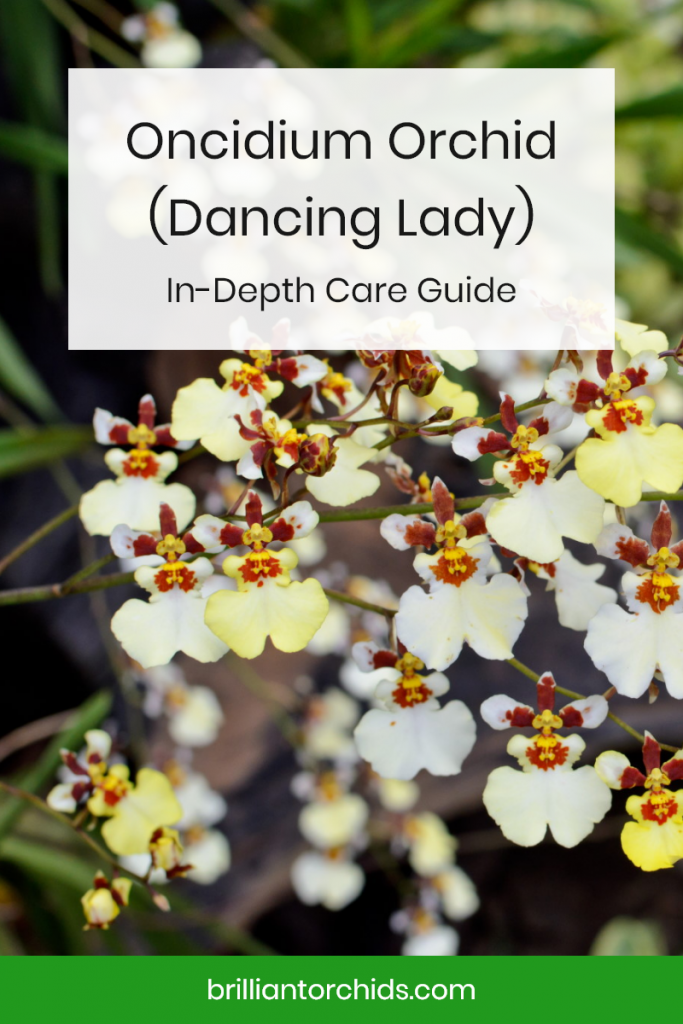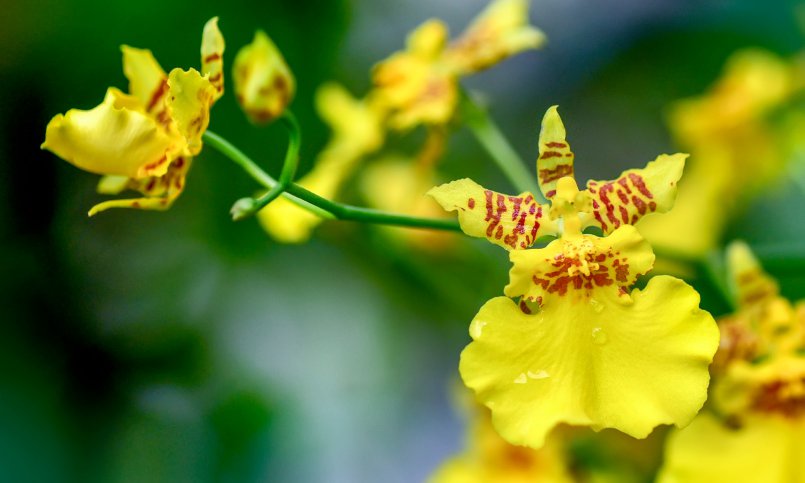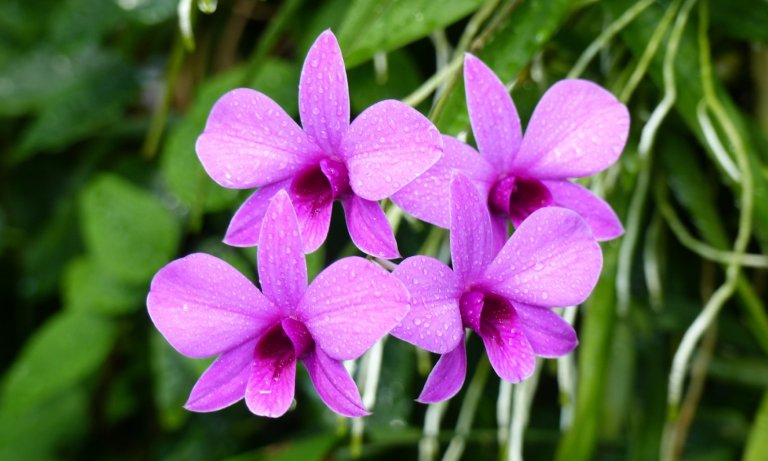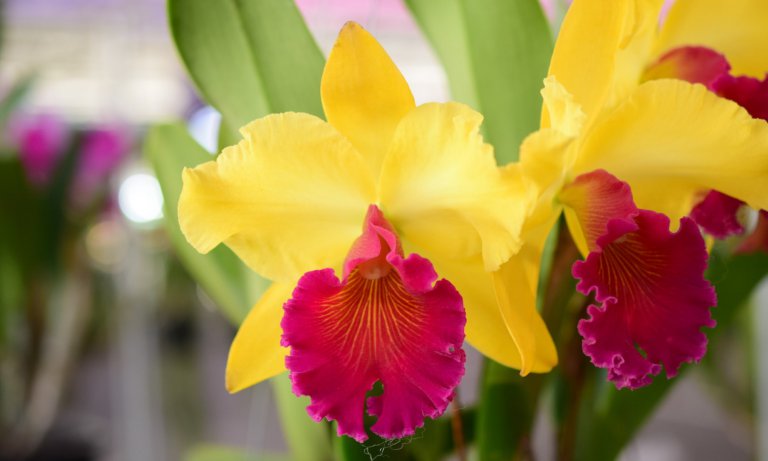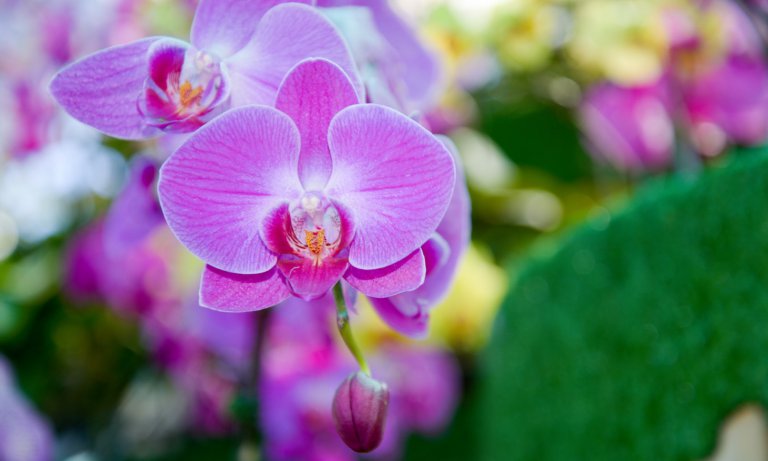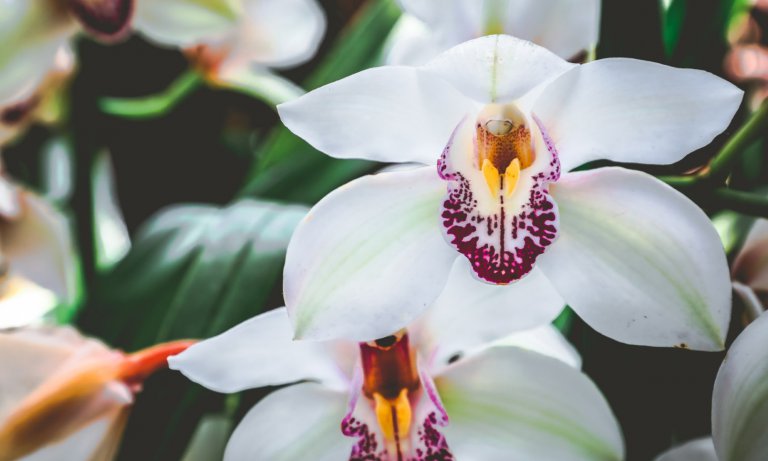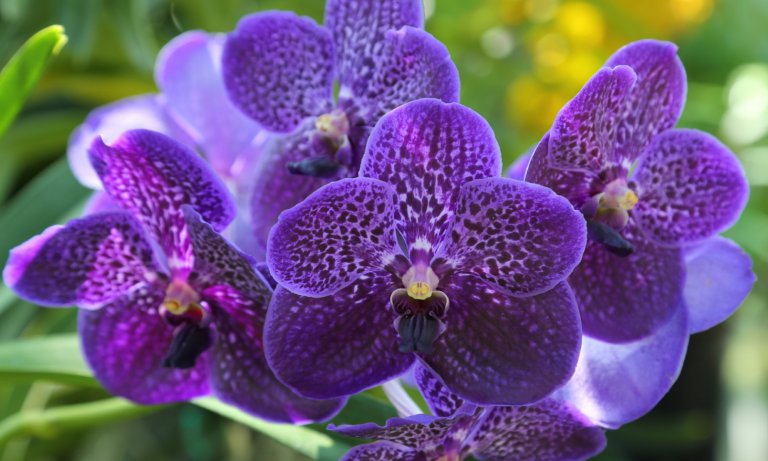Oncidium orchids, also commonly known as “Dancing Lady” orchids, are known for their vibrant colors and uniquely shaped flowers. This makes them very popular with orchid enthusiasts.
However, they are more particular about care than many other types of orchid. They require lots of light, and you should take extra care when choosing a potting mix or repotting an Oncidium, due to their relatively fine roots.
In this care guide, we’re going to take a closer look at these wonderful plants and their care requirements.
Natural Habitat
An important first step in learning to care for any type of orchid is to understand the conditions in which it grows naturally.
Oncidiums grow in the wild, primarily in jungles of Central and South America, and the West Indies. You can find them growing high in the Andes, and in the Amazon rainforest.
The conditions you provide should mimic this environment. Think warm, humid, with plenty of indirect light through the tree cover, and you’re well on your way to knowing how to care for one.
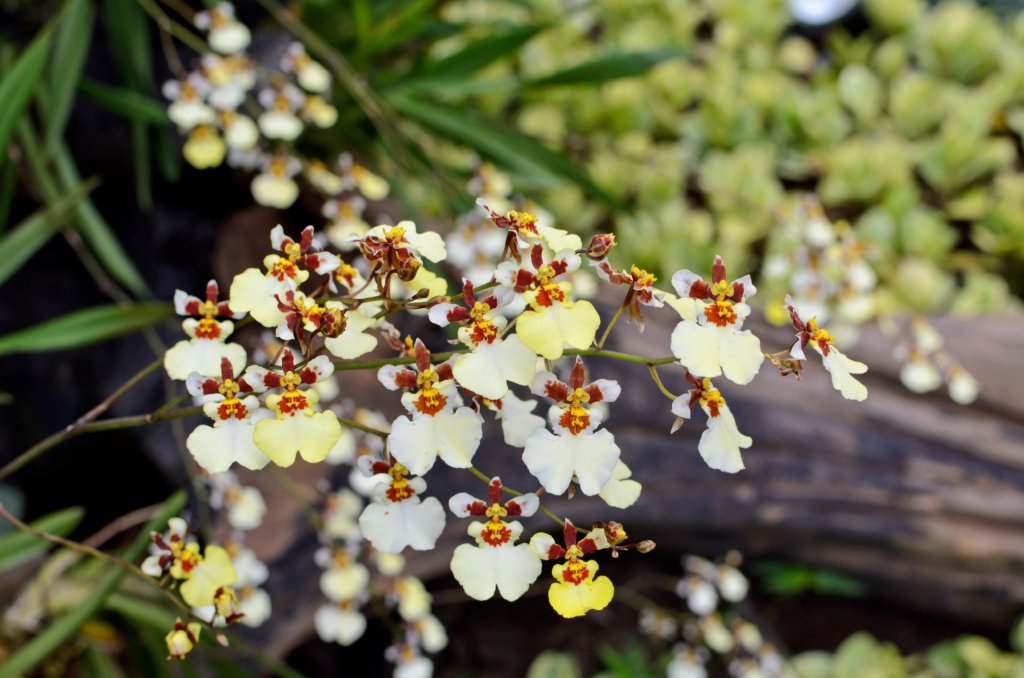
Dancing Lady orchids are usually epiphytes, depending on the variety. This means that in the wild, they grow on trees by clinging to the bark. They can also sometimes grow on rocks.
Bear this in mind when choosing a potting mix. As we’ll see later, a combination of bark and moss tends to work well.
How to Care for an Oncidium Orchid
With their natural habitat in mind, let’s break down each care aspect in a bit more detail.
Light
Oncidiums require plenty of light, and although these orchids are more tolerant than other species, the light should be indirect. Remember, the light filters through the treetops in the wild, rather than striking the plant directly.
When grown indoors, these plants can be placed in an east-, west-, or south-facing window. This will often ensure similar lighting conditions. A good guideline is 2000 to 4000 footcandles of light.
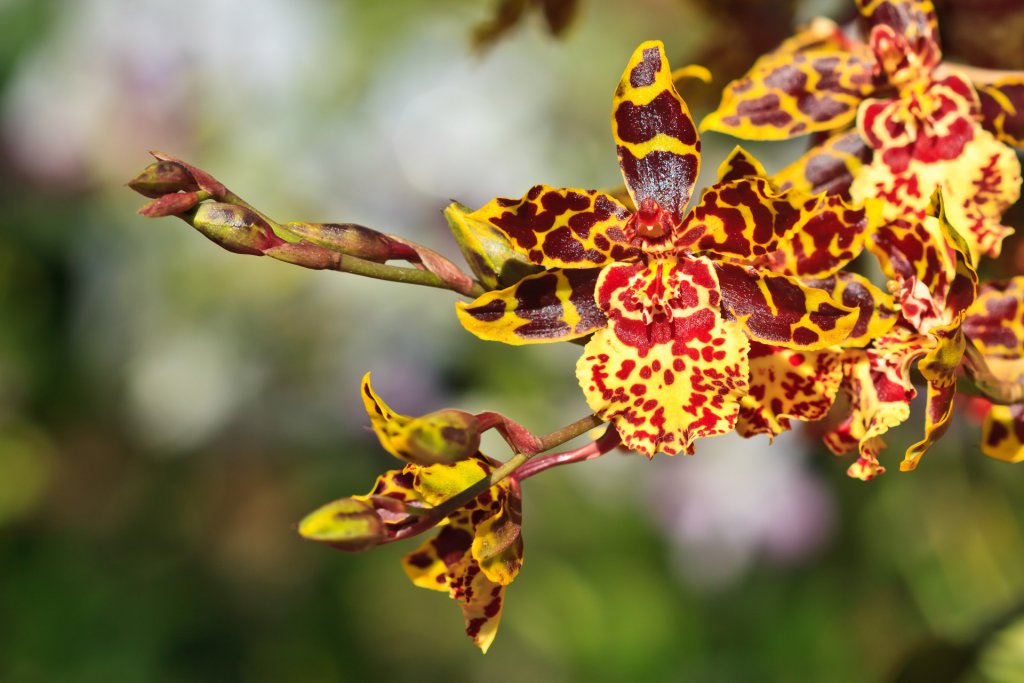
If you want to check whether you’ve got this right, the most reliable way is to buy a light meter.
You can also use the “hand test” – on a bright, clear day, hold your hand about 12 inches away from the leaves of your plant. If the shadow cast by your hand is clear and dark, you’ll know you have enough light to support an Oncidium.
Too much direct light can cause sunburn. If you’re worried about this, you can buy a thin cloth screen to put over your window. This will diffuse the light, while still letting most of it through.
Related: How Much Light Do Orchids Need?
Temperature
Dancing Lady orchids prefer warm temperatures. The average temperature in the Amazon, for instance, is about 77 degrees Fahrenheit.
So, you should aim to keep the temperature around 75-80 degrees Fahrenheit during the day. You can use a standard household thermometer to measure this.
The temperature should not drop below 55 degrees Fahrenheit at night. It’s fine for the temperature to drop a bit, however, as that will help the plants bloom.
Humidity
Like most orchid species, Oncidium orchids prefer medium to high humidity. As epiphytic orchids, they absorb a lot of the moisture they need from humidity in the air, through their roots.
These plants should live in an area with at least 40 percent humidity, although humidity levels between 50 and 60 percent are ideal. Again, you can get a meter to measure this. These are often combined with a thermometer, which is handy.
If you need to, you can increase humidity using a humidifier or humidity tray. However, it’s important to maintain good airflow around the plants to prevent bacteria and rot.
Alternatively, you can keep your plant in one of the more humid rooms in your house, such as a kitchen or bathroom. Just make sure to check the actual humidity, temperature, and light levels there, as this varies from home to home.
Watering
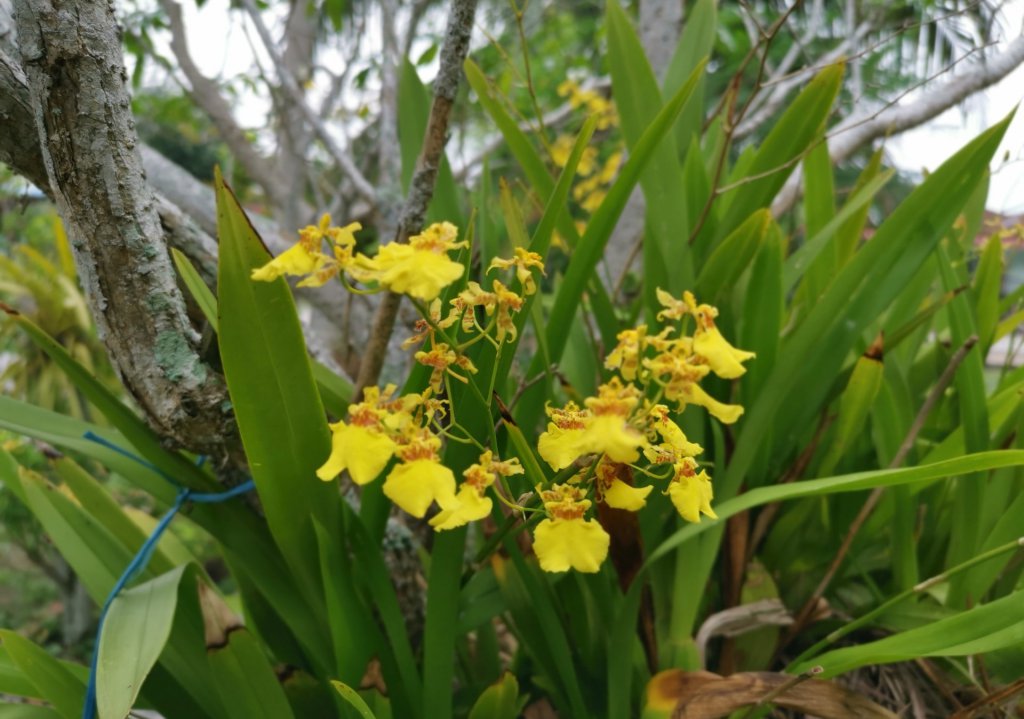
Because they generally grow with their roots exposed to the air, Dancing Lady orchids require specific watering routines so as not to rot the roots. The roots should be allowed to nearly dry out between each watering session.
Plants with thin leaves will require slightly more water than those with water-retaining leaves.
To judge whether your plant needs more water, you can look at the pseudobulbs. These are a thickened part of the stem used for water storage. Oncidiums have large pseudobulbs at the base of the plant. Wrinkled pseudobulbs are a sign that the orchid needs more water.
To water your orchid, immerse the pot in water until the potting medium is soaked through. Then, drain it thoroughly and make sure there is no standing water left. This should take about 10 to 15 minutes. This watering pattern mimics the bouts of heavy rainfall in your orchid’s rainforest habitat.
Oncidiums don’t like too many minerals in their water, so distilled water is a good option. Make sure the water isn’t too cold or hot, as this can damage the roots.
Related: How to Water an Orchid: Care Guide
Potting Mix & Pot
The potting medium used for Oncidiums should be fairly loose and should drain easily. Because they have relatively fine roots, don’t use a very coarse mix as you would for a Phalaenopsis – go for a medium-grade mix instead.
A mix of bark and sphagnum moss in equal quantities works best. Osmunda fern fiber is another great option if you’re able to find it.
Pots should have several holes in them to promote drainage and airflow. You can find a variety of pots specifically for orchids, such as net pots and clear plastic pots, at your local garden store.
For Oncidiums, it’s best to pick a pot that’s slightly on the smaller side, as they prefer a snug fit.
Related: Orchid Potting Mix: Care Guide & Information
Related: Best Orchid Pots: Beginner’s Buying Guide
Repotting
Because Oncidium orchids prefer to be in tighter pots, repotting should be done infrequently. How often it needs to be done depends on the plant, but generally, they should only be repotted once every two years.
Repotting should be done after the growth season. Wait until the plant has finished blooming, to avoid damaging it.
These plants have extremely fragile roots, so take care when repotting an Oncidium orchid. Check out our repotting guide to learn how to do this safely.
Related: How to Repot an Orchid: Step by Step Guide
Blooms
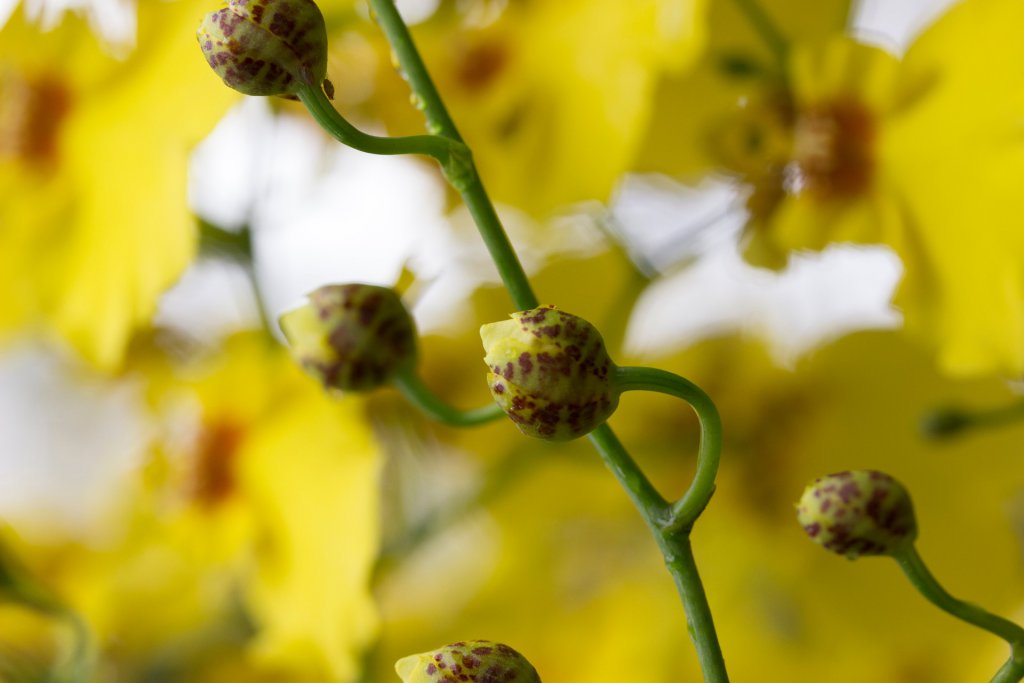
Different species of Oncidium orchid bloom at different times throughout the year. Some species will even flower multiple times within the year.
Once the plant blooms, the flowers can last for a few weeks or even a few months. It is important not to trim the stems of the plant once the flowers have gone, as flowers often bloom on the same stems over and over.
If a plant isn’t blooming, it can be exposed to slightly colder nighttime temperatures. This may induce the plant to flower. Make sure the temperature stays above 55 degrees Fahrenheit.
Related: How Often Do Orchids Bloom? (And How Can I Make It Happen?)
Fertilizer
In addition, you can give your plant some fertilizer every 2 to 3 weeks, which will help provide it with the nutrients it needs. Use a 30-10-10 orchid fertilizer and dilute it to quarter to half strength.
Remember that it’s best to err on the side of underfeeding your orchid, as too much can burn the delicate roots.
Check out our fertilizer guide for more detail on how to choose the right type of fertilizer and apply it correctly:
Related: Orchid Fertilizer: Everything You Need to Know
Pruning
After the blooming season has finished, you can remove the old flowering spikes from your Oncidium. This will prevent the plant from wasting any further resources on them.
Sterilize your tools with boiling water and alcohol, to avoid the risk of bacterial or fungal infections. Using a sharp blade, carefully cut the spike close to the pseudobulb. Try to leave less than an inch of the spike.
If you’ve accidentally over-watered your orchid, you may find its pseudobulbs starting to go mushy and rotten. To stop the rot spreading, you may need to remove the rotten pseudobulb. Again, use a sharp sterile blade to do this and be careful not to remove too much healthy tissue.
Related: How to Prune an Orchid: Step by Step Guide
Propagation
The easiest way to propagate a Dancing Lady orchid is by division, once it grows large enough.
To do this, carefully remove your orchid from its pot. You may need to cut the pot away to avoid damaging the plant.
Then, start dividing your orchid into pieces with at least 3 to 4 pseudobulbs per piece. Be very careful not to damage the fragile roots. You can use a sterile blade to help, but only when necessary.
Repot these pieces in fresh potting mix and care for them just as you would with a new plant.
It’s also possible to use backbulbs to propagate an Oncidium. Other methods such as cuttings and Keikis are uncommon.
Related: How to Propagate Orchids: Complete Care Guide
Oncidium Care Summary & Cheat Sheet
Let’s recap what we just learned:
| Light | 2000 to 4000 footcandles, indirect |
| Temperature | 80 degrees Fahrenheit during the day No lower than 55 degrees during the night |
| Humidity | 50 to 60 percent |
| Watering | Sparingly, when pseudobulbs start to wrinkle |
| Potting Mix | Medium-grade mix of 1:1 bark and sphagnum moss |
| Pot | Smaller pot with good drainage |
| Repotting | Every 2 years, after blooming |
| Blooms | Expose to cooler temperatures to encourage blooming |
| Fertilizer | Weak 30-10-10 fertilizer, every 2 to 3 weeks |
| Pruning | Remove old spikes and rotten pseudobulbs, when necessary |
| Propagation | Using division or backbulbs |
If you’d like to download this as a handy cheat sheet, right-click the image below and select “Save Image”:
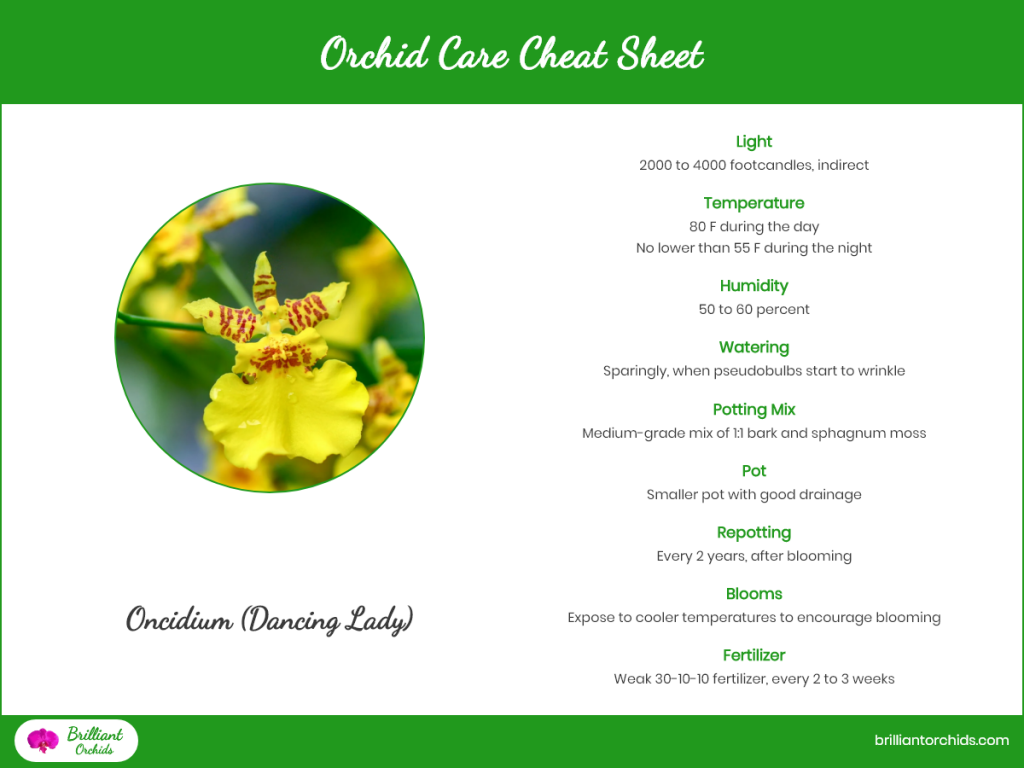
We recommend printing it off and keeping it by your orchid. Please share it if you find it useful!
Care Video
If you’d like to see all this in action, check out this great YouTube video from MissOrchidGirl:
Frequently Asked Questions
Here are some common questions about Oncidiums:
Which Species Are Easiest to Grow?
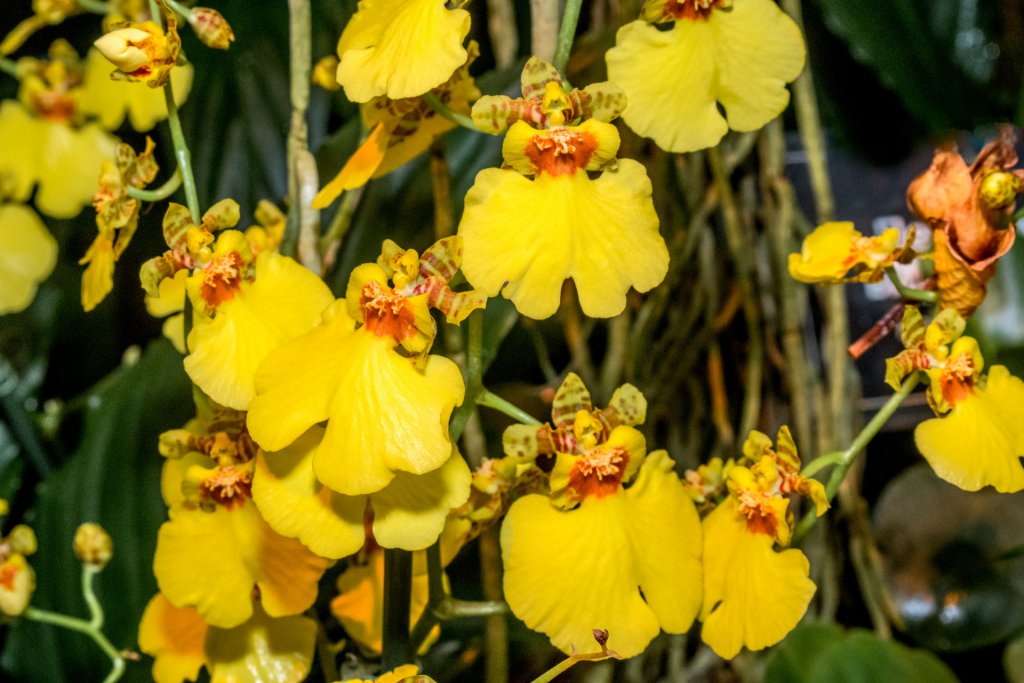
Some species of Oncidium are easier to grow than others.
We really like the Sharry Baby, which is sometimes called the “chocolate orchid” due to its scent. This species is widely available and is great for beginners.
We also recommend Oncidium flexuosum, which requires less watering and fertilizer than most other species.
How Can I Make My Oncidium Bloom Again?
It takes a lot of resources for your plant to grow flowers, so it’s usually seasonal and you shouldn’t expect it to be in bloom all the time.
If your orchid hasn’t bloomed for a while, first you should check when this normally happens. This will vary depending on the exact species, even with the same genus. Look up your particular plant online and find out when to expect this.
You can try to induce blooming by lowering the temperature at night, and by applying fertilizer. Just make sure you don’t overdo this, and remember that the best way to get your orchid to flower is to give it the best all-round care.
Why Are My Plant’s Leaves Turning Yellow?
If your Dancing Lady orchid is starting to develop yellow leaves, there are a few possible causes.
You might be over-watering it and causing root rot. Check the roots to see whether this is the case, and make sure your pot and medium have sufficient drainage.
It’s also possible your orchid has sunburn due to too much direct sunlight. Make sure the light is indirect.
If you’re still not sure, check out our article about this common issue for more detail.
Do you have any secrets or tips for growing Oncidiums? Leave a comment below and let us know!
Pin It!

